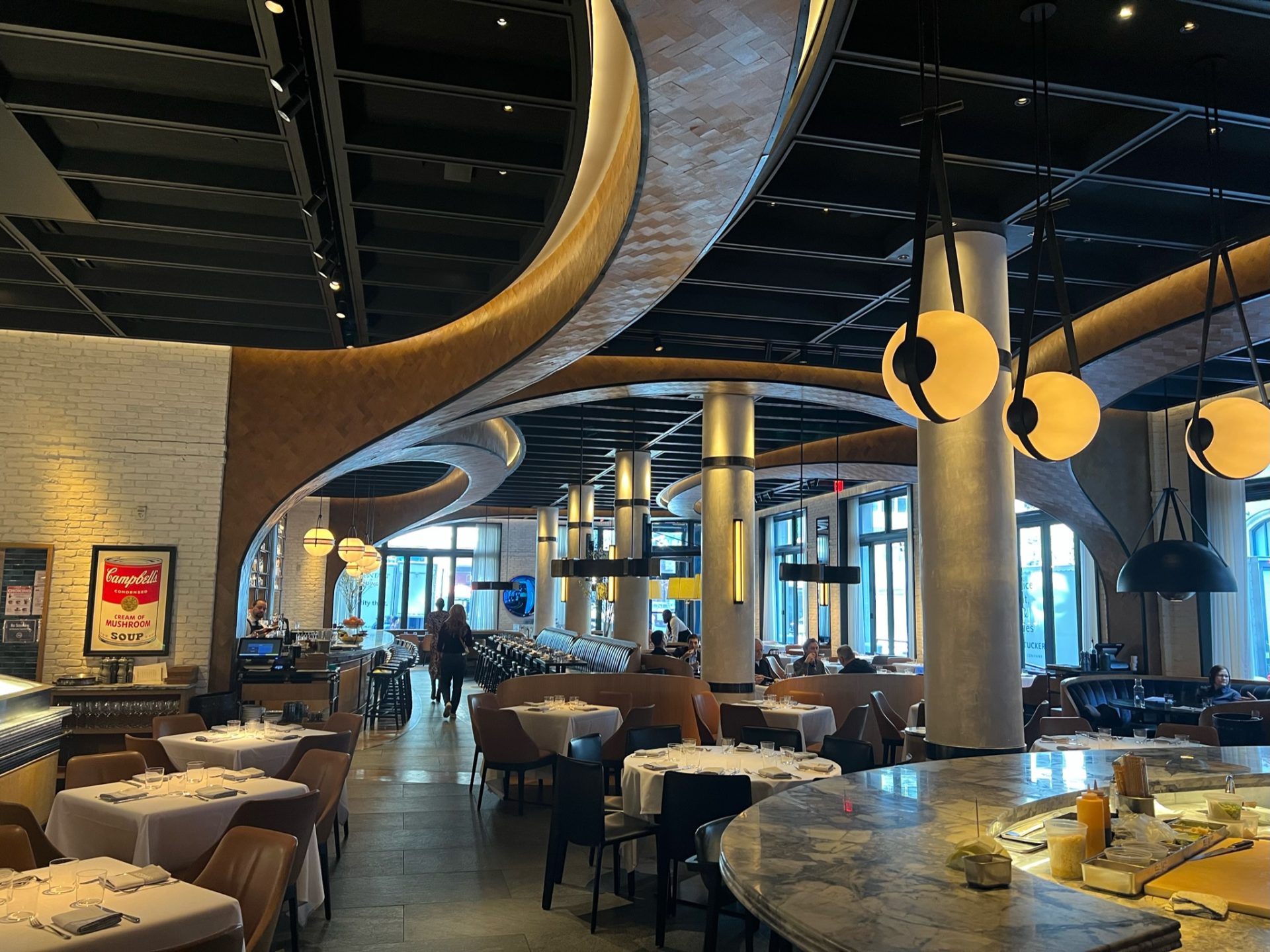Savor Genuine Asian Food With a Pan-Asian Twist for a Cooking Experience
Embarking on a culinary trip with authentic Eastern food, boosted with a Pan-Asian spin, provides an one-of-a-kind chance to explore the abundant tapestry of tastes that define the area's diverse cooking customs. As you consider these luring dishes, consider the cultural narratives and historic influences that form them, each bite using a story waiting to be uncovered. asian restaurant isb.

Exploring Pan-Asian Flavors
In the realm of international gastronomy, Pan-Asian cuisine stands out for its exceptional diversity and the harmonious interplay of tastes from various Asian cultures. This culinary strategy commemorates the rich customs and special active ingredients located across the continent, creating a tapestry of preferences that is both fascinating and rewarding. Key to Pan-Asian cuisine is its capacity to stabilize contrasting flavors-- sweet, salted, spicy, and sour-- while highlighting the freshness and quality of each active ingredient.
From the umami-rich soy sauce of Japan to the fiery chili peppers of Thailand, Pan-Asian cuisine supplies a substantial combination of flavors. These aspects are usually integrated in inventive methods, improving dishes with layers of intricacy. For instance, making use of fragrant herbs such as lemongrass and cilantro, typical in Vietnamese and Thai cuisine, adds a rejuvenating illumination to dishes, while the consolidation of coconut milk delivers a velvety, rich structure.
The focus on fresh fruit and vegetables and aromatic seasonings makes certain that each dish is not just a feast for the taste however likewise for the senses. Pan-Asian cuisine invites diners to begin on a culinary journey, discovering the huge and varied landscapes of Eastern gastronomy with every bite.
Fusion Dishes to Try
While Pan-Asian cuisine is celebrated for its conventional tastes, the modern cooking landscape is significantly embracing blend recipes that mix these timeless components with impacts from other areas. This ingenious strategy not only honors the abundant heritage of Asian cooking arts however likewise presents novel taste experiences that interest modern tastes.
A prime instance of such a fusion meal is the Korean-Mexican taco, where seasoned bulgogi beef is covered in a warm tortilla, topped with kimchi and a spicy gochujang-infused salsa. This mix weds the strong, full-flavored flavors of Korea with the vivid, fresh aspects of Mexican cuisine. In a similar way, sushi burritos have gotten popularity, amalgamating the delicate virtuosity of Japanese sushi with the hearty, hand-held convenience of a burrito, often including fusion active ingredients like tempura shrimp and avocado with a drizzle of wasabi mayo.
Another significant meal is Thai curry ramen, which instills the luscious, aromatic seasonings of Thai curry right into the comforting broth of traditional Japanese ramen, developing a harmonious blend that tantalizes the senses. These combination meals expand beyond simple novelty; they stand for a cooking discussion between cultures, motivating exploration and innovation worldwide of Pan-Asian food.
Essential Ingredients and Seasonings
To absolutely appreciate Pan-Asian cuisine, one should recognize the important active ingredients and flavors that create its structure. This diverse cooking style draws from a rich tapestry of Asian customs, using a harmonious mix of structures and flavors. Key ingredients include soy sauce, fish sauce, and oyster sauce, which give a savory umami deepness important to Eastern meals. Complementary to these are rice vinegar and mirin, providing a delicate level of acidity and sweetness.
Aromatic aspects are pivotal, with ginger, lemongrass, and garlic being common across different Pan-Asian recipes. These components give a fragrant base that enhances the intricacy of tastes. Spices such as celebrity anise, cardamom, and cinnamon present heat and personality, echoing impacts from regions like China and India.

Cooking Methods and Tips
Grasping the art of Pan-Asian food calls for knowledge with its distinctive food preparation strategies, each adding to the vivid tapestry of tastes this culinary practice is celebrated for. Central to these techniques is the stir-fry, a quick cooking technique that preserves the nutritional integrity and vibrant colors of components. Using a frying pan, bar italia the stir-fry technique enables for also warm circulation, necessary for attaining the particular appearance and flavor equilibrium of Pan-Asian recipes.
Another basic method is steaming, specifically prevalent in Chinese food. This gentle approach preserves the natural flavors and nutrients of ingredients, making it optimal for seafood and vegetables. Dumplings, a beloved staple, frequently gain from steaming, resulting in soft, delicious appearances.
Barbecuing, also important, imparts great smoky depths to dishes such as Oriental bulgogi or Japanese yakitori (Best ambiance restaurants Islamabad). This technique commonly involves marinating ingredients, permitting tastes to pass through deeply before food preparation over an open fire or hot plate
Last but not least, grasping the art of balancing tastes-- sweet, sour, salted, bitter, and umami-- is vital. Appropriately layering these elements can boost a meal from normal to extraordinary, supplying a complicated and pleasing culinary experience that personifies the essence of Pan-Asian food.
Dining Experiences Worldwide
Around the world, Pan-Asian food provides an exceptional eating experience, commemorated for its rich tapestry of flavors and vivid presentations. This cooking sensation has actually transcended social borders, capturing the hearts and palates of food fanatics worldwide. In worldwide cities osaka sushi like New York, London, and Sydney, Pan-Asian restaurants serve as melting pots where cooking practices from Thailand, Japan, China, and beyond assemble, supplying restaurants with a diverse mix of dishes that highlight the area's variety.
The worldwide allure of Pan-Asian food lies in its capability to supply both credibility and innovation. Chefs skillfully wed conventional active ingredients such as lemongrass, soy sauce, and miso with contemporary techniques, causing meals that are both refreshingly new and acquainted. This blend enables restaurants to start a cooking trip that respects heritage while welcoming modernity.
Additionally, eating experiences are raised via thoughtfully created atmospheres that show the principles of Pan-Asian looks. From minimal Japanese-inspired interiors to lively Thai-themed rooms, each restaurant provides an unique ambiance that enhances the culinary offerings. Because of this, clients are not merely taking in a dish yet partaking in a cultural experience, making Pan-Asian eating a truly worldwide sensation.
Conclusion
The expedition of Pan-Asian food uses a profound understanding of the intricate interplay of tastes and culinary practices across Asia. By accepting combination meals such as Thai curry ramen and sushi burritos, the cooking journey not just highlights the adaptability of conventional components but also showcases ingenious modern-day methods. This gastronomic adventure, enhanced by cooking techniques and important seasonings, gives a special opportunity to appreciate the cultural diversity and culinary creativity that define Pan-Asian cuisine on a worldwide range.
Beginning on a culinary trip via authentic Asian cuisine, enhanced with a Pan-Asian twist, provides an one-of-a-kind opportunity to check out the rich tapestry of tastes that define the area's diverse cooking traditions.In the realm of international gastronomy, Pan-Asian food stands out for its tasty pizza exceptional variety and the unified interaction of tastes from various Asian cultures. Secret to Pan-Asian cuisine is its capacity to stabilize contrasting tastes-- wonderful, salted, spicy, and sour-- while highlighting the quality and top quality of each component.
